Wi-Fi Design
CRITICAL DESIGN ASPECTS
1. Primary Coverage Goal

OBJECTIVES
▶ Provide Wi-Fi service in all required location
▶ High-quality signal strength
▶ Maintain high data rates
RESULTS
▶ Improve airtime efficiency
▶ Improve density handling
2. Secondary Coverage Goal
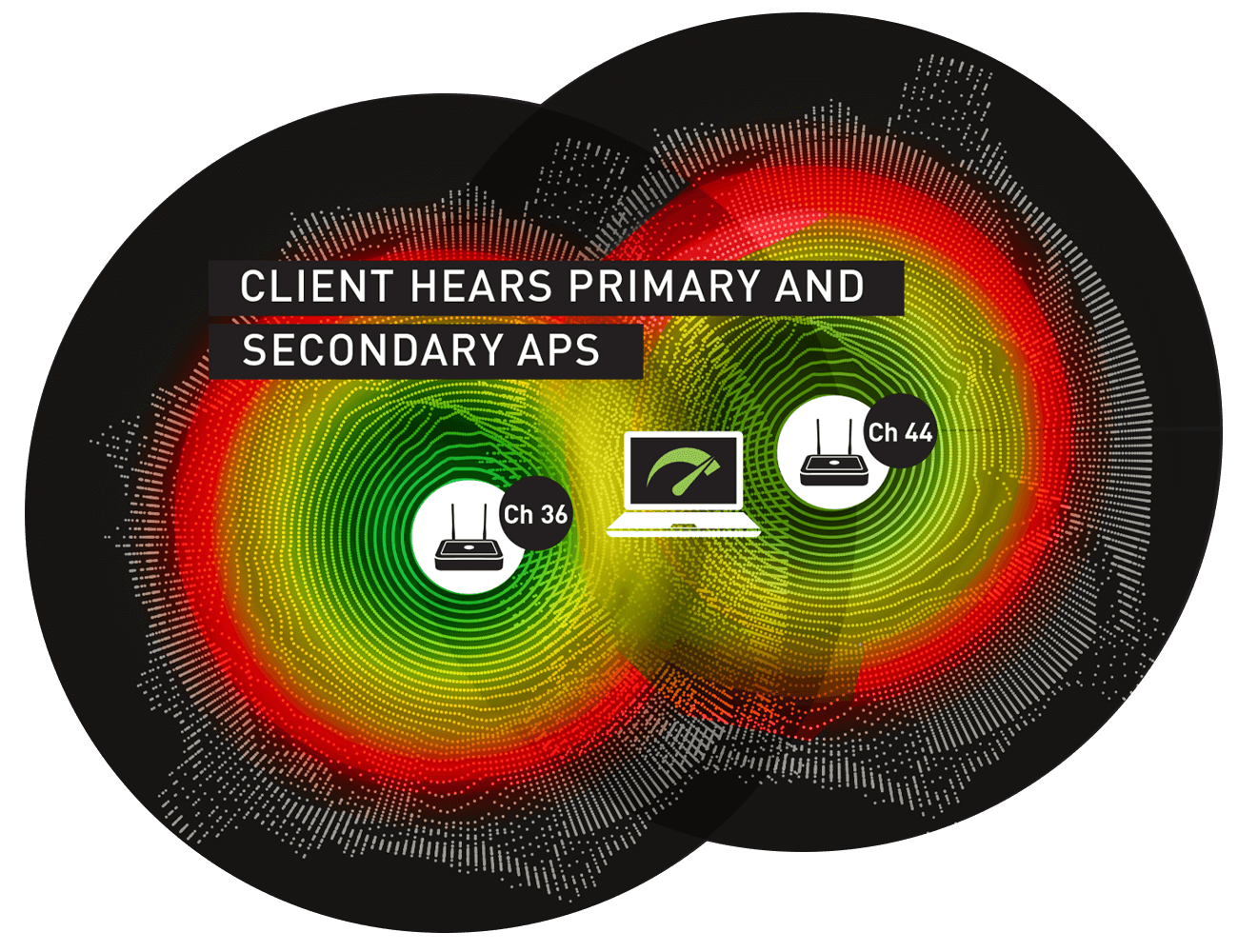
OBJECTIVES
▶ Provide coverage for 2APs in each location
RESULTS
▶ Improve client roaming
▶ Low latency roaming for real-time application
▶ Redundancy for AP failure
3. Capacity Plan
High Client Density

Low Client Density

CONSIDERATIONS
▶ More spectrum in 5 GHz provides up to 8x the capacity of 2.4 GHz
▶ Understand client mix
▶ Client offered load/ SLA
▶ Model airtime demand
▶ Understand airtime saturation limits (80% BE, 50% BE/VO/VI, 35% VO)
RESULTS
▶ Optimal number of APs
▶ Proper client distribution between 5 GHz and 2.4 GHz
▶ Leave idle airtime for growth
Client Device Efficiency
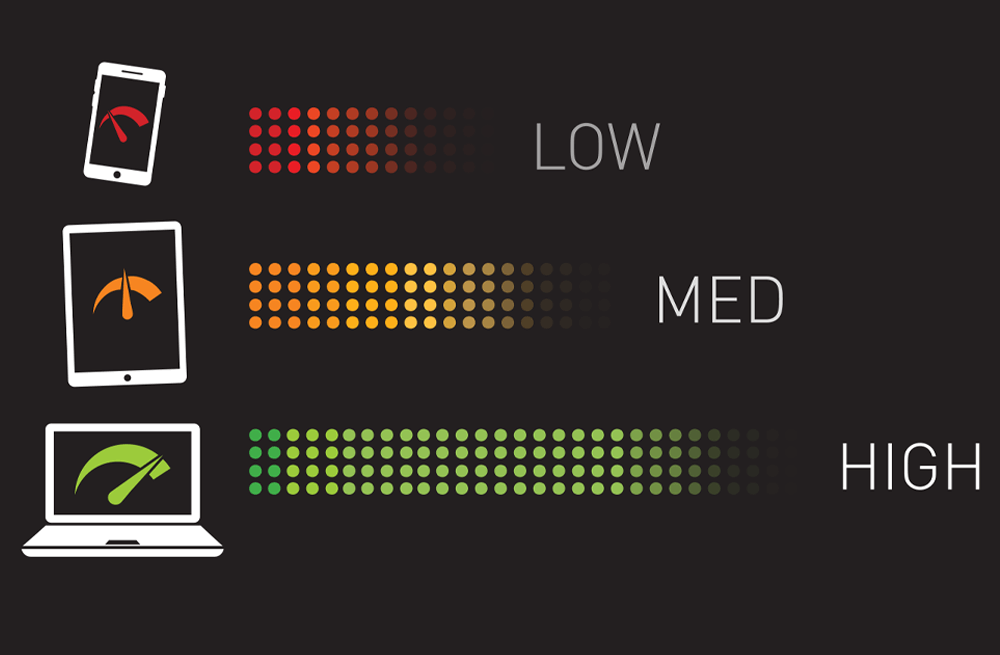
4. Minimize Interference
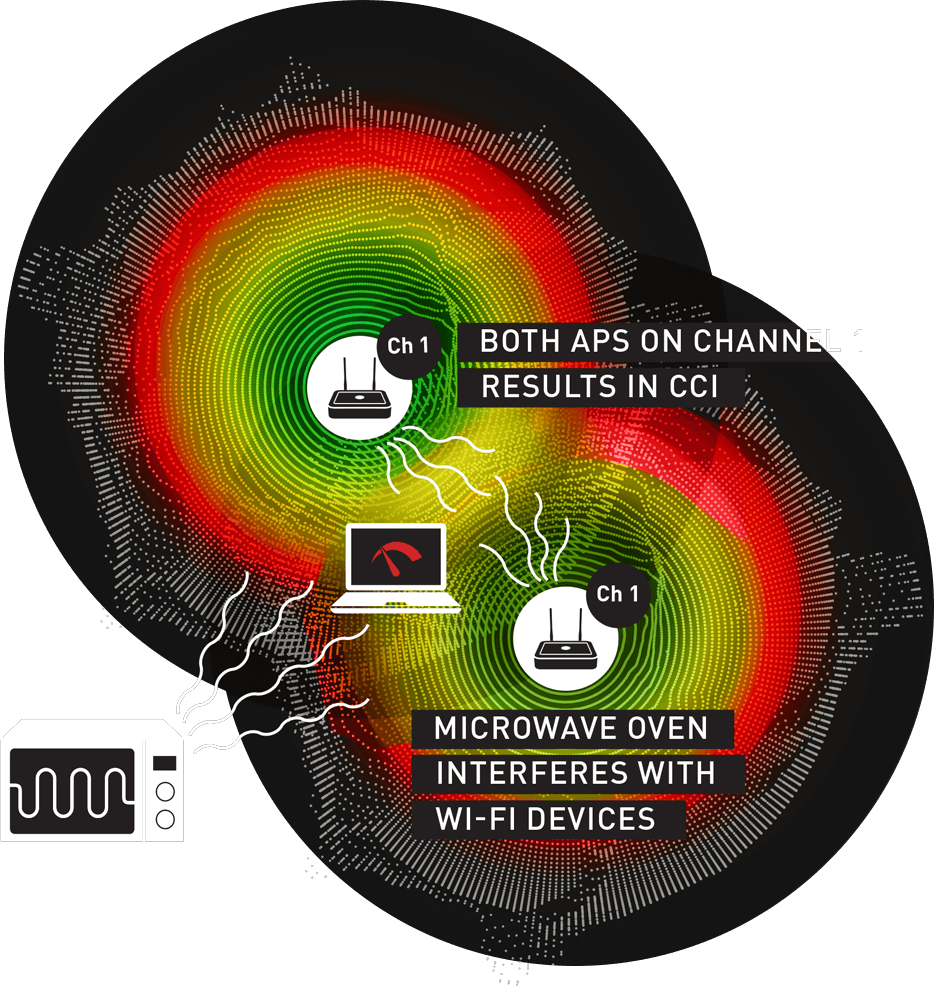
OBJECTIVES
▶ Isolate APs on the same channel
▶Reduce shared airtime
▶ Limit contention domains
▶ Eliminate external interference
RESULTS
▶ Minimize co-channel interference (CCI) and adjacent channel interference (ACI) between APs on the same or overlapping channels
▶ Ideally, only one AP audible on each channel in a physical location
▶ Ideally, remove sources of external RF interference or avoid impacted channels if they cannot be removed
HIGH-PERFORMANCE WI-FI TIPS & TRICKS
1. Design for 5 GHz as Primary
▶ The 5 GHz band provides 8 times the capacity of 2.4 GHz
2. Define Coverage Goal(s)
▶ Too aggressive can lead to co-channel interference
▶ Too conservative can lead to poor client performance
3. Place APs Where Users Are Located
▶ In-room placement is best for client performance
▶ Avoid hallways, if possible unless required for voice roaming
4. Tailor Coverage to the Facility
▶ Leverage RF obstructions for frequency re-use
▶ Consider proper antennas and orientation for signal propagation
5. Fine Tune AP Power Levels
▶ Align with on-site signal measurements of RF propagation
▶ Align with AP density and frequency re-use requirements
6. Disable 2.4 GHz Radios if Necessary
▶ There are fewer available channels in 2.4 GHz
▶ Disabling radios can prevent co-channel interference and shared capacity between clients
▶ Some APs allow switching 2.4 GHz radio to 5 GHz
7. Design and Validate with Representative Client Devices
▶ Spot-check with actual client devices to ensure the design matches actual client performance
▶ Alternatively, measure with a standard RF site survey adapter and compensate the signal based on the actual client device characteristics
8. Higher AP Density Requires Smaller Channel Widths
▶ Reduces co-channel interference and shared capacity between clients
▶ Reduces client contention and improves network stability
9. Disable Low Data Rates to Improve Performance
▶ 802.11b clients can significantly impact network performance
▶ Reduces overhead from management frames and broadcast/multicast traffic
10. Minimized the Number of SSIDs
▶ Network overhead increases with each SSID defined
RF DESIGN PROCESS
1. GATHER REQUIREMENTS
▶ Blueprints/ CAD drawings
▶ Coverage areas
▶ Facility layouts & construction materials
▶ Client number and mix
▶ Client density distribution
▶ Critical applications/ business process

2. PRE-INSTALLATION DESIGN
▶ Predictive modeling
▶ Wall attenuation measurements
▶ “AP on a stick” measurement
▶ Wired network integration
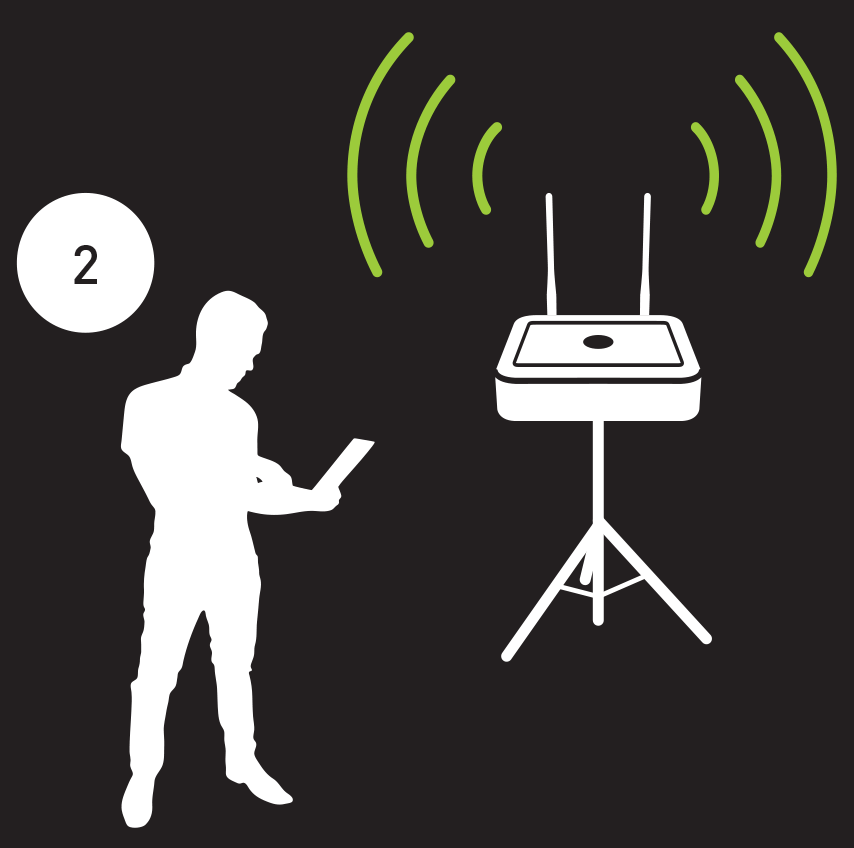
3. POST INSTALLATION VALIDATION
▶ RF site survey (passive/ active/ spectrum)
▶ RF tuning channel and power plans
▶ Association and authentication tests
▶ Roaming tests
▶ Spectrum analysis
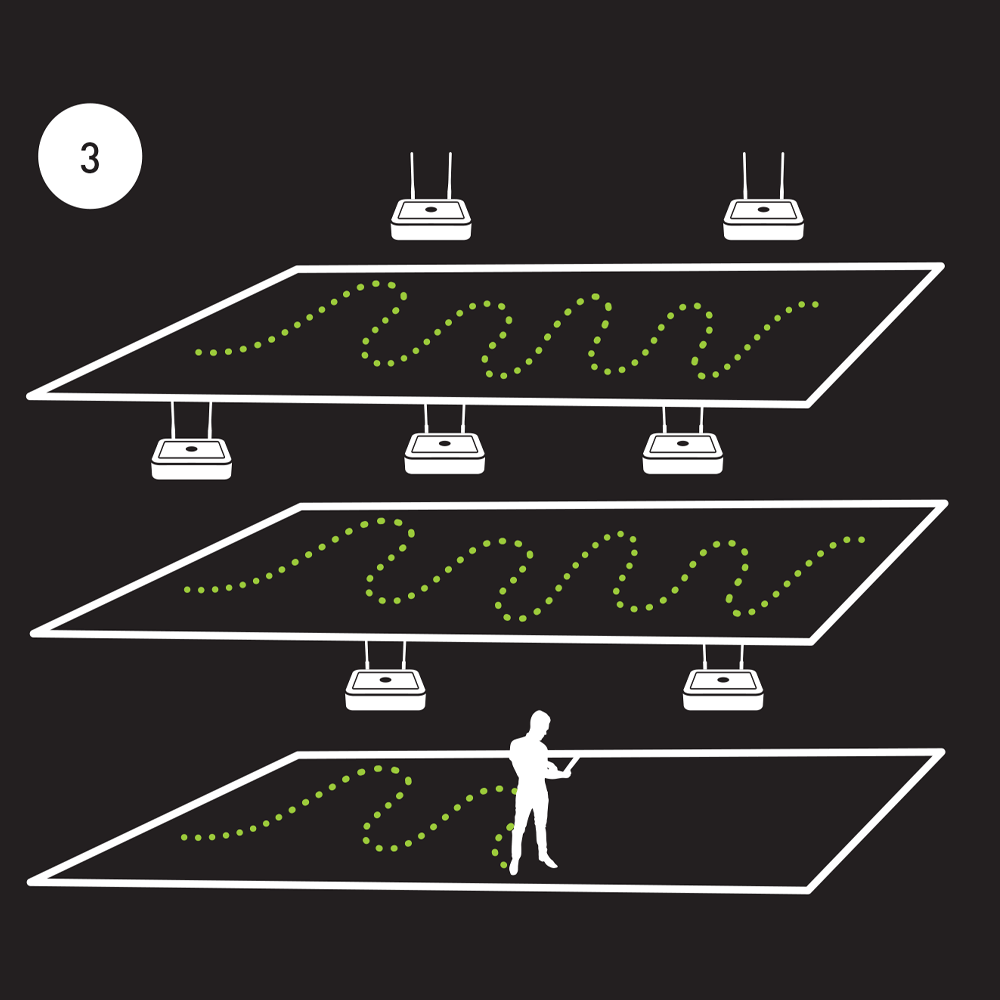
We, at MEC, can help you achieve that with the help of Ekahau Wireless Design products.
Talk to us for inquiries or for FREE product consultation.

